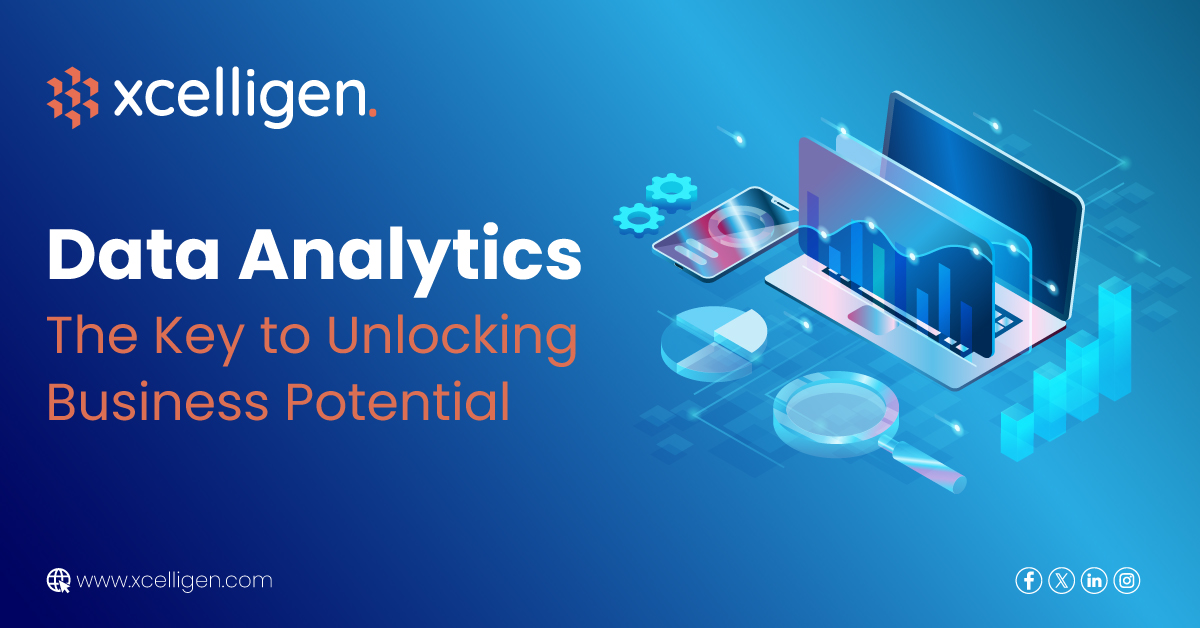In the digital age, data is often described as the new oil – a valuable resource that, when properly refined, can yield invaluable insights. Data analytics, the science of analyzing raw data to make conclusions about that information, is crucial for businesses seeking to optimize their operations, enhance customer experiences, and innovate in their sectors.
The Power of Data Analytics
Data analytics allows businesses to convert raw data into actionable insights. This process involves examining data sets to draw conclusions about the information they contain. These insights can inform decision-making, leading to more effective strategies and improved business outcomes.
Types of Data Analytics
- Descriptive Analytics: This looks at past performance and understands that performance by mining historical data to identify trends and patterns.
- Diagnostic Analytics: This focuses on why things happened by comparing historical data with other data to find dependencies and patterns.
- Predictive Analytics: This uses statistical models and forecasts techniques to understand the future and predict outcomes based on historical data.
- Prescriptive Analytics: This uses past performance to generate recommendations about how to handle similar situations in the future.
Applications in Various Industries
Retail: For inventory management, customer behavior analysis, and personalized marketing.
Healthcare: In patient care, treatment optimization, and healthcare management.
Finance: For risk assessment, fraud detection, and customer segmentation.
Manufacturing: In optimizing production processes, supply chain management, and quality control.
Benefits of Data Analytics
Informed Decision Making: By understanding trends and patterns, businesses can make more informed decisions.
Increased Efficiency and Productivity: Analytics can identify bottlenecks and optimize processes.
Enhanced Customer Experience: Data insights can help tailor experiences to individual customer needs and preferences.
Risk Management: Predictive analytics can identify potential risks and mitigate them effectively.
Challenges in Data Analytics
Implementing data analytics isn’t without challenges. These include data quality management, data integration from various sources, and ensuring data privacy and security.
The Future of Data Analytics
Advancements in AI and machine learning are taking it to new heights. Predictive analytics is becoming more accurate, and prescriptive analytics is more sophisticated, allowing businesses to not just understand but also shape their future trajectories.
Leveraging Big Data
In today’s digital landscape, the amount of data generated is immense. Big data analytics processes large volumes of data to uncover hidden patterns, correlations, and other insights. With today’s technology, it’s not just about analyzing data but about doing it quickly and efficiently to gain real-time insights that can lead to better decision-making and strategic business moves.
The Role of Data Visualization
Data visualization plays a critical role in data analytics. By presenting data in a graphical or pictorial format, businesses can more easily comprehend complex patterns and insights. Effective visualization helps in simplifying complex data sets, thereby enabling decision-makers to grasp difficult concepts and identify new patterns.
Integrating Data Analytics into Business Strategy
Integrating data analytics into business strategy involves more than just the technical aspects. It requires a culture shift within the organization. Employees at all levels should be encouraged to think analytically and make data-driven decisions. Training and development play a key role in this transformation.
Customization and Personalization Through Data
One of the most significant advantages of data analytics is the ability to offer personalized experiences to customers. By analyzing customer behavior, preferences, and feedback, businesses can tailor their products, services, and communications to meet the unique needs of each customer, thereby enhancing customer satisfaction and loyalty.
Predictive Analytics in Action
Predictive analytics is being used in various innovative ways across industries:
- E-commerce: Predicting buying patterns to recommend products.
- Banking: Assessing credit risk based on customer transaction history.
- Telecommunications: Predicting customer churn and taking proactive measures to retain them.
Ethical Considerations and Data Privacy
As data analytics grows more powerful, ethical considerations and data privacy emerge as critical concerns. Businesses must navigate the fine line between leveraging data for insights and respecting user privacy. Adhering to data protection regulations, such as GDPR, and implementing ethical guidelines for data usage are essential practices.
Advanced Analytical Techniques and Tools
The field of data analytics is continuously evolving, with new tools and techniques emerging regularly. Machine Learning (ML), Artificial Intelligence (AI), and Neural Networks are becoming integral parts of advanced data analytics, offering more profound and predictive insights than ever before.
Driving Innovation Through Data
It is not just a tool for optimizing current operations; it’s a catalyst for innovation. By revealing trends and patterns that were not apparent before, it can inspire new products, services, and ways of doing business.
Conclusion
As we delve deeper into the era of big data, the significance of data analytics cannot be overstated. For businesses looking to stay ahead in a competitive environment, embracing it is no longer an option but a necessity. It’s the key to unlocking potential, driving innovation, and achieving sustainable growth in the modern business landscape.
